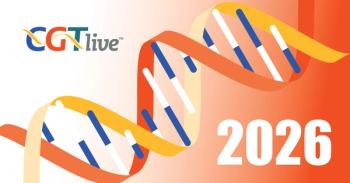
Maintenance Daratumumab Improves PFS in Newly Diagnosed Transplant-Eligible Myeloma
Single-agent daratumumab as maintenance therapy improved progression-free survival compared with observation in patients with newly diagnosed multiple myeloma eligible for autologous stem cell transplant.
Single-agent daratumumab (Darzalex) as maintenance therapy improved progression-free survival (PFS) compared with observation in patients with newly diagnosed multiple myeloma eligible for autologous stem cell transplant (ASCT), according to topline findings of a pre-planned interim analysis from part 2 of the phase 3 CASSIOPEIA study.
Results showed that the monoclonal antibody led to a 47% reduction in the risk of disease progression or death versus observation (HR, 0.53; 95% CI, 0.42-0.68; P < .0001). Additionally, the safety profile of daratumumab was consistent with prior studies, and no new safety signals were observed.
Based on the pre-planned interim analysis data, which was conducted by an Independent Data Monitoring Committee, it was recommended to unblind the study results.
Janssen Biotech, Inc., which licensed daratumumab from Genmab in 2012, stated that it plans to discuss the potential for a regulatory submission for this indication of daratumumab with health authorities. Data are anticipated to be presented at an upcoming medical conference as well as published in a peer-reviewed journal.
The second part of the study is being conducted by the French Intergroupe Francophone du Myelome (IFM) in collaboration with the Dutch-Belgian Cooperative Trial Group for Hematology Oncology (HOVON) and Janssen Research & Development, LLC.
“Following the positive data from the first part of the CASSIOPEIA study, we are very pleased to see this benefit,” said Jan van de Winkel, PhD, chief executive officer of Genmab. “We are appreciative of the efforts of the IFM, of HOVON and of Janssen for their work on this study.”
In the open-label, multicenter, phase 3 CASSIOPEIA study, investigators enrolled 1085 newly diagnosed patients with previously untreated symptomatic multiple myeloma who were eligible for high dose chemotherapy and ASCT. In the first part of the trial, patients were randomized to receive induction and consolidation treatment with daratumumab plus bortezomib (Velcade), thalidomide (Thalomid) and dexamethasone (VTd) or VTd alone. The primary endpoint was the number of patients who achieved a stringent complete response (sCR).
In the second part of the study, patients who achieved a response underwent a second randomization to either receive maintenance daratumumab 16 mg/kg every 8 weeks for up to 2 years versus observation. The primary endpoint of this part of the study is PFS.
In part 1, patients were first randomized to receive 4 cycles of induction therapy with VTd alone (n = 542) or in combination with daratumumab (n = 543) at 16 mg/kg, high-dose melphalan, and ASCT, and then consolidation VTd alone for 2 cycles or combined with daratumumab at 16 mg/kg.
To be eligible for enrollment, patients had to have previously untreated myeloma that is eligible for high-dose chemotherapy and ASCT, as well as an ECOG performance status of 0 to 2. The baseline characteristics were similar between arms. Patients were aged 18 to 65, the median age was 58.5 years, and most patients had standard-risk disease (84.5%).
Moreover, 85% and 81% of patients on the D-VTd and VTd arms completed induction and consolidation therapy, respectively; a total 90% of patients on the D-VTd arm and 89% of those on the VTd arm underwent ASCT.
At a median follow-up of 18.8 months, the sCR rate at post-consolidation therapy was 29% in patients who received the daratumumab regimen compared with 20% in those who received VTd alone following consolidation therapy (odds ratio [OR], 1.60; 95% CI, 1.21-2.12; P = .0010).2
Additionally, the overall response rate (ORR) post-consolidation therapy was 93% with D-VTd and 90% with VTd; the ≥complete response (CR) rates were 39% and 26%, respectively. Additionally, the CR rates were 10% and 6%, and the very good partial response (VGPR) rates were 45% and 52%, respectively. The partial response rates were 9% and 12% for the D-VTd and VTd-alone arms, respectively. Moreover, responses were found to deepen over time.
The median PFS had not yet been reached in either arm, and the daratumumab regimen showed a 53% reduction in the risk of disease progression or death (HR, 0.47; 95% CI, 0.33-0.67; P <.0001). The 18-month PFS rate was 93% with the daratumumab regimen and 85% with VTd alone, and the PFS benefit was observed across all patient subgroups. The overall survival data were still immature at the time of data cutoff for the ASCO abstract, with 14 deaths reported for the daratumumab arm compared with 32 deaths for the control arm (HR, 0.43; 95% CI, 0.23-0.80).
In part 1, the most frequently (≥10%) reported grade 3/4 treatment-emergent adverse events (TEAEs) in the daratumumab arm were neutropenia (28% vs 15% in the VTd arm), lymphopenia (17% vs 10%, respectively) stomatitis (13% vs 16%), and thrombocytopenia (11% vs 7%). Infusion-related reactions were experienced by 35% of patients who received the daratumumab regimen. Fourteen percent of patients discontinued treatment on the D-VTd arm compared with 19% on the VTd-alone arm; the most common reason for discontinuation was AEs or serious AEs.
Data from a subgroup analysis of CASSIOPEIA that were presented at the 17th International Myeloma Workshop also showcased an improvement in minimal residual disease (MRD) negativity rates and PFS with D-VTd compared with VTd alone in patients with high-risk multiple myeloma.3 Results showed that D-VTd led to a 34% reduction in the risk of disease progression or death compared with VTd alone in those with International Staging System (ISS) Stage III disease (HR, 0.66; 95% CI, 0.32-1.39). In patients with high-risk cytogenetics of del(17p) or t(4;14), the daratumumab regimen reduced the risk of disease progression or death by 33% (HR, 0.67; 95% CI, 0.35-1.30). However, no benefit with sCR was observed with D-VTd over VTD alone in those with ISS Stage III disease (P = .8506) or high-risk cytogenetics (P = .4839).
Based on the findings from the first part of the CASSIOPEIA study, the FDA approved daratumumab in combination with VTd in September 2019 for the treatment of patients with newly diagnosed multiple myeloma who are eligible for ASCT.
References
- Genmab announces IFM, HOVON and Janssen achieve positive topline results in second part of phase 3 CASSIOPEIA study of daratumumab in multiple myeloma at pre-planned interim analysis. News release. Genmab. October 21, 2020. Accessed October 22, 2020. https://bit.ly/2Hor1N8
- Moreau P, Attal M, Hulin C, et al. Phase 3 randomized study of daratumumab (DARA) + bortezomib/thalidomide/dexamethasone (D-VTd) vs VTd in transplant-eligible (TE) newly diagnosed multiple myeloma (NDMM): CASSIOPEIA Part 1 results. J Clin Oncol. 2019;37(suppl; abstr 8003). doi10.1200/JCO.2019.37.15_suppl.8003
- Sonneveld P, Attal M, Perrot A, et al. Daratumumab plus bortezomib, thalidomide, and dexamethasone (D-VTd) in transplant-eligible newly diagnosed multiple myeloma (NDMM): subgroup analysis of high-risk patients (Pts) in CASSIOPEIA. Presented at: 17th International Myeloma Workshop; September 12-15, 2019; Boston, MA. Abstract OAB-003.
Newsletter
Stay at the forefront of cutting-edge science with CGT—your direct line to expert insights, breakthrough data, and real-time coverage of the latest advancements in cell and gene therapy.






























